 |
Articles
12 May 2009 
COFES – Wish you were hereVladimir Malukh
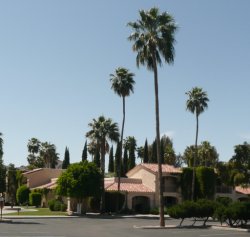 The 10th anniversary congress COFES-2009 (Congress on the Future of Engineering Software) took place from April 16 - 19 in a picturesque Scottsdale, Arizona, USA. Many CAD experts, including myself, have heard about this annual event, but one needs to be there to understand what it is. This is a truly unique event, like nothing else; it is profoundly different from other conventional conferences and seminars organised by the vendors for the users: COFES gets together only the experts, who do not come with various advertising and marketing agendas but effectively are pursuing here only one goal – to talk. Talk to each other, talk to colleagues, talk about the present and the future of CAD, and discuss in their own technical language what they have been able to achieve. It appears that there are no competitors at COFES as well as no subordination and no titles, all communication is between equals, and the only things valued here are professionalism and interesting ideas.
The 10th anniversary congress COFES-2009 (Congress on the Future of Engineering Software) took place from April 16 - 19 in a picturesque Scottsdale, Arizona, USA. Many CAD experts, including myself, have heard about this annual event, but one needs to be there to understand what it is. This is a truly unique event, like nothing else; it is profoundly different from other conventional conferences and seminars organised by the vendors for the users: COFES gets together only the experts, who do not come with various advertising and marketing agendas but effectively are pursuing here only one goal – to talk. Talk to each other, talk to colleagues, talk about the present and the future of CAD, and discuss in their own technical language what they have been able to achieve. It appears that there are no competitors at COFES as well as no subordination and no titles, all communication is between equals, and the only things valued here are professionalism and interesting ideas.
However, the level of participants’ professionalism is apriori very high. This year COFES-2009 attracted such persons as the creators of SolidWorks John Hirschtick and Mike Payne and the current President of SolidWorks Jeff Ray; Oleg Shilovitsky, the Technical Director of Dassault Systemes ENOVIA Smarteam; Buzz Kross, who is responsible for engineering works at Autodesk; Bill Carrelli, the Vice-President of Siemens PLM Software; and top executives of the leading consultancies - Brad Holtz (Cyon Research), Allan Behrens (Cambashi) and Chad Jackson (Aberdeen Group). The full list of participants is available at the COFES site.
Indirectly, the themes of the discussions can be derived from the preliminary agenda; but in reality discussions and conversations were much wider and it is hardly possible to relay them in detail. I will outline the most significant moments that generated profound and universal interest.
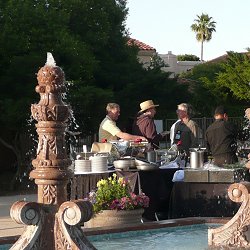 In line with the conference name, the main issue was “what shall we do next, where shall we apply our efforts in developing engineering software”? The overwhelming majority agreed that in the coming years one can hardly expect dramatic breakthroughs, such as transition to 3D or development of the PLM concept some time ago. Rather, we should count on evolutionary growth and improvement of products and technologies.
In line with the conference name, the main issue was “what shall we do next, where shall we apply our efforts in developing engineering software”? The overwhelming majority agreed that in the coming years one can hardly expect dramatic breakthroughs, such as transition to 3D or development of the PLM concept some time ago. Rather, we should count on evolutionary growth and improvement of products and technologies.
Allan Behrens, the Director of Cambashi consultancy, suggested in his look-ahead report that generating and efficiently using clean and cheap energy will be one of the high-priority tasks of the industry. Not simply clean or just cheap energy but both – exactly the concept of cheap&clean. As a consequence, CAD will especially focus on optimization tools for the future products, and this is where one can anticipate robust efforts and advancements in the near future. This goal has many aspects, including transition to more environmentally-friendly fuels in the power generating industry and transportation; using energy carriers which contain fewer rare-earth and toxic elements; improving production processes; and so on, and so forth.
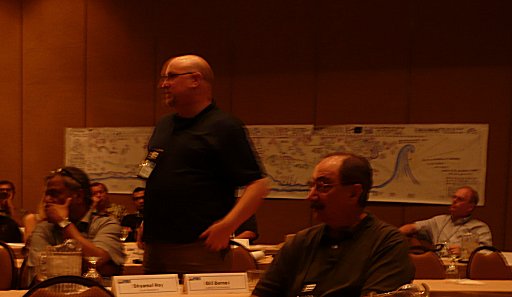
Undoubtedly, the current economic crisis has affected the focus of industry efforts: COFES participants actively discussed the likely consequences of the crisis, its possible scenarios and the impact on the industry development both in the sidelines of the conference and at a special session, where everybody could ask questions or express one’s opinion. The experts were not so much concerned with what would happen but were primarily interested in what we could do for our clients to minimise and even prevent future adverse consequences. George Wang, a leading CAD expert of Boeing, beautifully expressed this general consensus: “we’re not happy until you’re not happy”.
One of the likely vectors of the industry development is to provide affordable product lifecycle management tools, believes Peter Schroer, the President of Aras Corporation. The Corporation already offers free PLM solutions, gaining income only from consultations and services. Microsoft SharePoint is another product, which according to many experts will deliver affordable solutions: any conversation about PLM can hardly go on without mentioning this technology.
No discussion, report or Round Table bypassed the issue of interoperability. Today interoperability is understood much wider than simply possibility to exchange data: this concept also encompasses the tools for effective work with imported data, in particular, non-geometrical data, and such nuances as continuity of software and user interfaces, which simplifies transition to new product versions or systems provided by other vendors.
As a solution for working with imported geometry, direct editing technology seems to be very promising. At COFES its main promoters were Kubotek and SpaceClaim, and, first of all, the founder of SpaceClaim, a charismatic industry veteran Mike Payne.
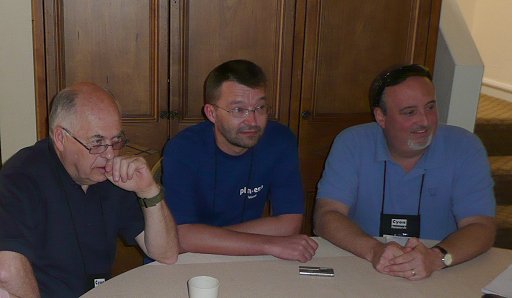
Payne’s position is rather radical: he believes that in the near future the advancements in computer efficiency and software algorithms will make direct editing the dominant technology, and traditional concepts of construction tree and constraint-based parameterisation can be abandoned. This position is certainly very controversial, but one cannot help being amazed how vigorously Payne is defending his standpoint; and, one must admit, he advocates it rather substantively. Variational geometric modeling technologies are the area of LEDAS’ main competencies, so I could not stay away from this discussion. I must confess that I learnt many interesting things and hopefully so did my colleagues. A detailed review and comparative analysis of different approaches in this field deserves a special article.
Other vendors have a more moderate position. Such technologies as Siemens PLM Software synchronised modeling, SolidWorks Instant 3D and, according to Buzz Kross, just ready to come Inventor Fusion, imply collective use of direct editing, saving (perhaps with limitations) the construction history and a system of geometric constraints.
Reports and presentations focused heavily on the future of user interfaces. At a dedicated Round Table we completely messed up the schedule, discussing this topic twice as long as it was initially planned. Summing up, it is expected that interfaces will be more adaptable to the qualification of a specific user and the tasks at hand, which the user is trying to solve, and even the degree of the user’s fatigue or ability to concentrate at a particular moment of time. To achieve that goal all technological prerequisites are available. According to such authoritative experts as John Hirschtick, very interesting capabilities are emerging with the use of multitouch technology on the large sensor screens. Not only it makes user’s interaction with graphic elements more natural but it also provides possibilities of collective work literally using the same screen. Dassault Systemes and SolidWorks already demonstrate and analyse the prototypes of such solutions on Microsoft Surface platform.
Microsoft also does not stop here: Simon Floyd, Manager, Worldwide Industry Technology Strategy, Microsoft, demonstrated an arresting video-presentation of how their research department sees the development prospects for Surface technology. Practically everything becomes a working surface: table, walls, windows, mobile devices and even flexible pages of the on-line newspapers. The content is transferred from one working surface to another in an absolutely natural manner. So the foremen at construction sites probably will continue working with large-format plans and drawings - they will simply become electronic and interactive.
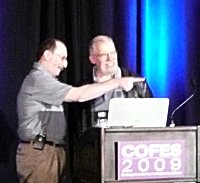 COFES’ organisers devoted special attention to the younger generation. The morning after the conference there was a special Intern Session for postgraduate students and young professionals, where they had an opportunity to converse with the participants.
COFES’ organisers devoted special attention to the younger generation. The morning after the conference there was a special Intern Session for postgraduate students and young professionals, where they had an opportunity to converse with the participants.
Taking about COFES, one cannot forget about the organisers – Cyon Research and personally the founders of the congress Brad Holts and Joel Orr. They have been the heart of the congress throughout all ten years of its work. Despite the obvious pressure of organisations issues, Brad made a detailed presentation based on the survey of the CAD/PLM market completed by Cyon Research, while Joel came up with a review “Remembering the Future”, where he reminded us how we had used to imagine the future of the industry which has become a today’s reality.
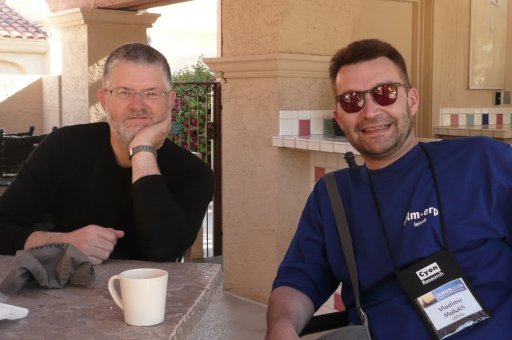
Finally, what did COFES give to me personally and to our company? An ocean of contacts and face-to-face professional communication, personal acquaintance with such industry legends as Bob MacNeel, John Hirschtick and Mike Payne, enormous exciting and insightful information, confirmation of my many ideas and notions as to how our industry is going and developing. I attended lots of different events and venues but once again I would like to reiterate that COFES is simply unique; so let me just cite Pink Floyd – wish you were here..
Permanent link :: http://isicad.net/articles.php?article_num=13036

|
 |